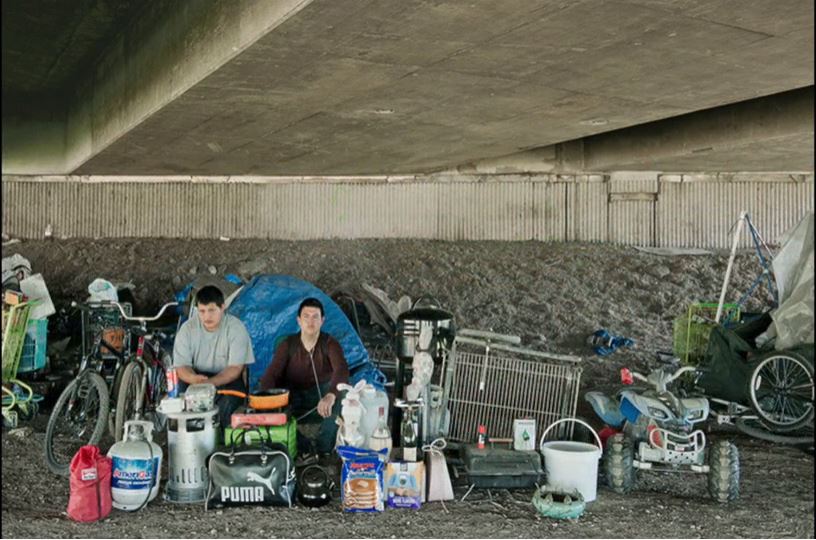Last Updated on 08/30/2017 by Chris Gampat
While it’s now frowned upon to just dive headfirst into “documenting” stories of homeless people, it can still be puzzling to some as to what exactly makes it distasteful. Former homeless photographer Robert Shults has recently shared his perspectives about this matter in an insightful interview with Photo District News (PDN). Despite its popularity and relevance, street photography has seen its own share of controversies, particularly when it comes to the ethics of photographing people without their consent. The rules against it aren’t definite, but the common stance is that anyone out in the streets is fair game, and it’s the photographer’s goal to not get caught. This becomes extra tricky when you put homeless people into the picture, so to speak.
Robert Shults lived on the streets for only a few months in 2001, but it was enough for him to experience firsthand what it was like to be on the other side of the lens.
“I had the advantage of being young and fit and healthy, physically and mentally, and it was only a few months I was living on the street,” he told PDN. “[So] the greatest injury I took away was not any physical wear and tear, but the pressure of being seen all the time, and not having the option not to be seen.”
Add being photographed, whether surreptitiously or upfront, to that stress and you have a multi-layered issue of consent, empathy, cooperation, and privacy.
“The assumption is that if you’re in public, if you’re on a public street, then you’ve essentially given implicit consent to be observed. The difficulty with that is, for those who have no choice but to be in public, consent to be observed is not implicit. There’s nowhere else to go. They can’t revoke that consent because they can’t go inside.”
Given this problem, there’s a thousand and one ways to do this kind of street photography wrong (or callously); we’d rather focus on how it can be done without insult to injury for these tricky subjects. In the video below, Robert talks about how two photographers, Sam Wolson and Huang Qingjun were able to portray homelessness with insight and empathy:
For Robert, the best way to do it is by investing in a subject as a human being rather than as a symbol for a particular condition. Delve deeper into the person’s individual experiences. See what kind of perspective you can capture if you take away the “homeless” tag. Most importantly, put your work into what it feels like and not merely what it looks like.
Following the words of wisdom from street photographers Joel Meyerowitz and Bruce Gilden, consider this another lesson on how to make your street snaps more emotive and empathetic.
Don’t forget to read Robert Shults’ PDN interview to get more of his insights on this matter.
Photo by Huang Qingjun taken from the video


